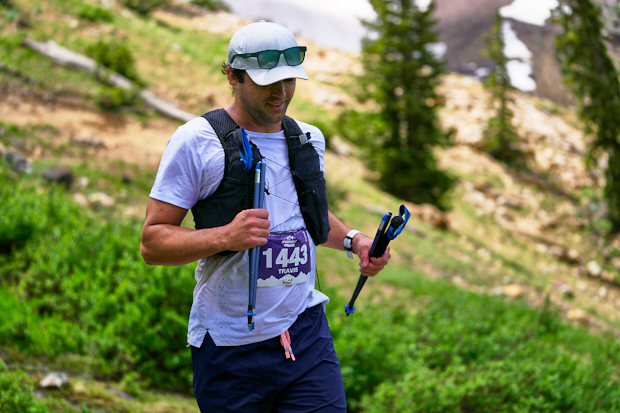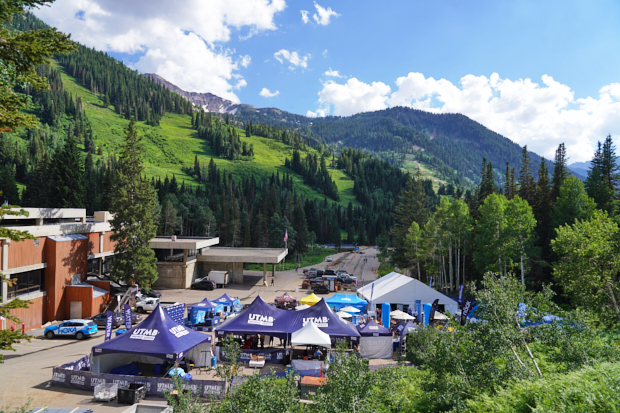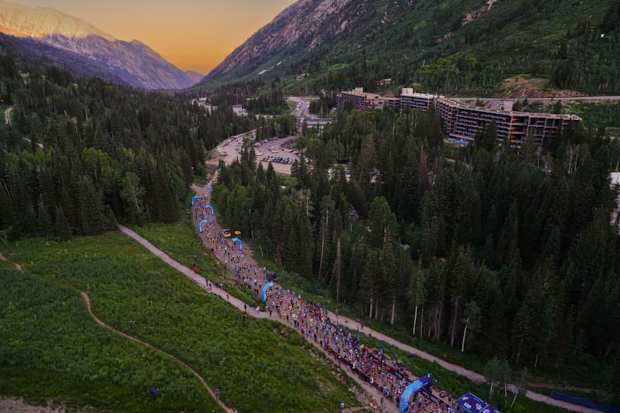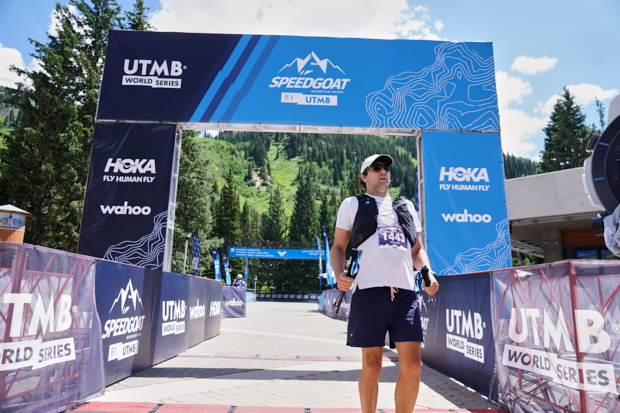Why We Race: A Look at Speedgoat Mountain Races by UTMB
The simple reality is that for many of us, the choice to race is voluntary. The decision to register for an event (sometimes a day or two after completing another one), pack up our gear, and labor through a course is because we want to. For some, the answer to “why” we race carries embedded meaning – remembering a lost friend, supporting a charity, interacting with local community – while for others, it's about achieving personal milestones. Occasionally, the “why” changes from race to race and can be a mix of reasons.
As amateur triathletes, the “why” we do what we do drives us. It’s what carries us through workouts during the day, through long hours on the weekends, and helps define what we want from an experience. It’s also the answer we have ready when the question is asked, “But you know you don’t have to do it, right?”
In a way, the choice to be a triathlete is because we can. And sometimes, we do hard things.

Speedgoat Mountain Races by UTMB took place on July 19th and 20th at Snowbird, a ski and summer resort near Salt Lake City, Utah. While not a triathlon, Speedgoat is an endurance race filled with beauty, challenges, and (yes) a lot of trails. In fact, a growing number of athletes have found that utilizing different races – whether ultras, gravel rides, obstacle courses, long-distance swims, or other formats – add psychological and physiological benefits. They do so disrupting a routine to bring new experiences. This also applies to professional athletes. This year, Molly Seidel, U.S. Olympic medalist in the marathon, used the experience at Snowbird as part of a training build for this fall.
The two-day event offered options to race 50k (11,400 ft+ elevation gain), 28k (6,300 ft+ elevation gain), 20k (4,265 ft+ elevation gain), and 10K (1,650 ft+ elevation gain) on the course, which is set high in the mountains. Cut across hillsides, ridgelines, and with various switchbacks, each distance presented its own set of strategies.

As a trail race, there are several differences with a triathlon (beyond the absence of swimming or biking). Here are just a few:
Mandatory items – Depending on the length chosen, fluid carrying capacity (ex. 1 liter or ½ liter) is required, as is a jacket. The course at Snowbird featured exposed areas on mountains where wind occurred, gulches set in shadows, and areas clearly in the summer heat. Trekking poles (while not on the list) proved invaluable to fold up or down based on the terrain.
Mass starts – Beginning the race means finding a place in the chute, with no formal seeding. Overall, the atmosphere is more relaxed, with a focus on finishing (rather than finishing with a PR).
Narrower pass lanes – Because courses often feature hiking or mountain bike trails, passing often occurs when the landscape opens up to mountain tops or service roads. Until then, the pack tends to land in an average, comfortable rhythm.
Aid stations – Unlike courses with hydration every mile or two, these are less frequent (and clearly marked on pre-race materials). However, for the check points that feature food, it’s an unabashed party – complete with meat trays, PB & Js, pickles, crackers, soda (still carbonated), and music. Rather than rush through the transition area, participants often take this time to repack their gear, say hello to family/friends, stretch, or take a break. The volunteers are also heavily race experienced, with many competing in a different event over the weekend.
Electronic devices – Headphones, cellphones, cameras, and more are generally permitted (note: always check race rules). This means taking time to load your favorite audio books or tunes, snap pictures on the course, or stop to check your standings during the race is possible. For the Speedgoat Mountain Races by UTMB, it was easy to see real-time placement in the race (including DNFs among competitors), and even check when the system estimated a participant would make it to the next checkpoint.
Qualification to other events – The Speedgoat Mountain Races by UTMB allotts running stone(s) to finishers, which act as entries for lotteries for UTMB (Ultra Trail du Mont Blanc). Certain races also assign an index score. The lottery and placement process for UTMB is complex, and less straightforward than an Age Group or Elite podium placement (or roll down) and/or ranking used by triathlon.

However, there are also many similarities to triathlon:
Companionship on course – While still (and always) an individual competition, people tend to be very supportive and encouraging. Many individuals often finish around the same people they started with (in part because of the difficulty of the vertical course, which leads to a lot of power walking). For example, I spent most of my time in view of ultramarathon athlete and below-knee amputee Amy Palmiero-Winters – who is a Guiness World Record holder and was featured recently in the first episode of the Netflix Series Human Playground attempting the Marathon Des Sables (also known as the Marathon of the Sand).
Payoff from training – The many hours spent building endurance and practicing nutrition also applies. Even though there’s less consistency on the course (one mile at running can be at an 8 min pace, while the next uphill is 30 minutes), using heart rate zones and planning for calorie intake is vital. As the course wears on, it can be difficult to remember fueling cadence – but if adhered to, can make a significant difference over less experienced racers.
Registration and Finisher’s Village – As an event owned or operated by IRONMAN, the Village has a familiar feel with bib/tracker pick up, merch tent, and opportunities to see fellow racers. While there were no live goats, a rather adorable stuffed animal in front of the mountains made for a great background, as did Snowbird itself.
Elite racing – The weekend featured a professional field, including the likes of Andy Wacker, Helen Mino Faukner, and more (some other professional runners observed in person, like Anthony Costales, who recently was on the podium at Western States). The unique aid station atop the mountain at Snowbird (with a view of valleys on either side) and the Tunnel that goes through it (with mining and skiing historical items along its damp metal walkway) is a sight to see, as were the large snow fields with safety lines for the way up (and the way down, if racers chose not to descend it sliding, which many did).

What is also in common with triathlon is the desire to experience something memorable. The courses at Speedgoat Mountain Races by UTMB are hard (actually, very hard) and generally longer than advertised (the 28K race was close to 20 miles, rather than the 17 miles listed on the website – as it’s hard to stitch trail systems to be a precise distance). However, the “why” we race is still there. As the saying from Dead Poet’s Society goes (quoting Henry David Thoreau), “I went to the woods because I wanted to live deliberately. I wanted to live deep and suck out all the marrow of life.” For Speedgoat Mountain Races by UTMB, the trails did not disappoint. They allowed living among the trees (even if for a weekend), the mountain air, and the chance to race freely.


Start the discussion at slowtwitch.northend.network